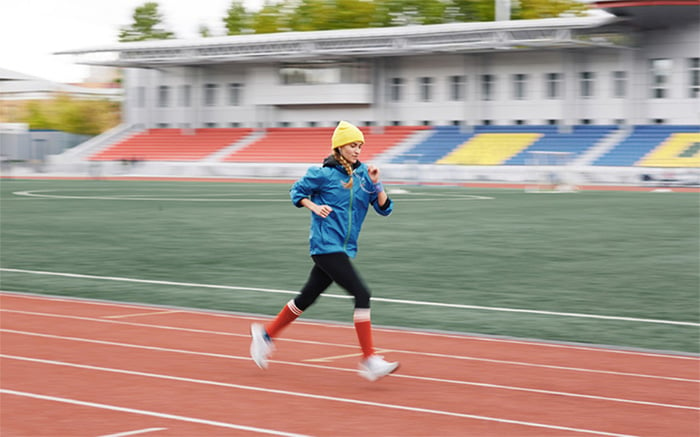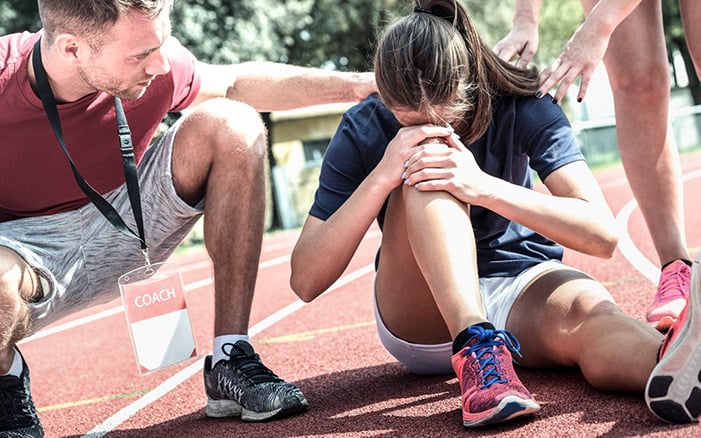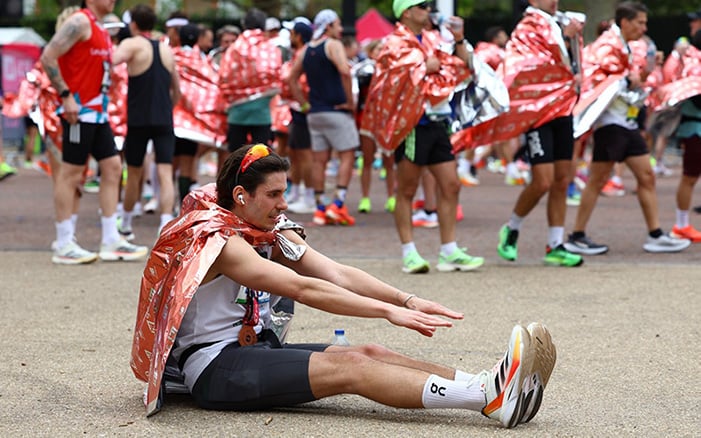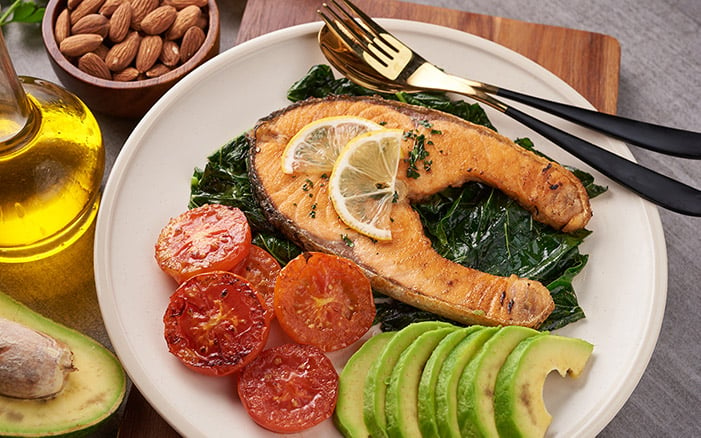Before you hit your stride, your body needs a signal: it’s go time. A proper warm-up helps activate the right muscles, improve mobility, and get your nervous system ready for running. Skip it, and you risk sluggish starts—or worse, an injury that could sideline you for weeks.
A study found that dynamic warm-ups significantly improve power and agility. Another review linked them to reduced injury risk and better performance in endurance athletes. That’s because dynamic movements increase blood flow, raise core temperature, and fire up your neuromuscular system—all without the muscle-tightening effects of static stretching.
These 10 drills take just 5–10 minutes and can make every run feel smoother, faster, and more efficient. Scroll down to see this full warm-up in action in a video.
1. Leg swings
Purpose: Loosen tight hips and hamstrings, increase stride mobility.
How: Start with the front-to-back leg swings. Stand tall with one hand on a wall or post. Swing your leg forward and back in a controlled arc, gradually increasing range. Do 10–15 swings per leg.
Then do the side-to-side swings. Face forward and swing your leg across your body, then out to the side like a pendulum. Stay upright—don’t lean. Do 10–15 reps per leg.
2. Hamstring scoops
Purpose: Gently stretch hamstrings and improve hip hinge control.
How: Step one heel forward with a flexed foot, hinge at the hips, and “scoop” both hands along the ground. Alternate legs every step. Do 10–12 reps total.
3. Open the gate
Purpose: Improve hip mobility and prep for a full range of motion.
How: Lift one knee up, rotate it outward like you’re opening a gate, and place the foot down. Repeat on the other side. Do 10 reps per leg.
4. Close the gate
Purpose: Balance the hip movement and control inward rotation.
How: Reverse the previous move—lift your knee out to the side, then rotate inward across your body. Focus on smooth, deliberate motion. Do 10 reps per leg.
5. High knees
Purpose: Activate hip flexors, warm up quads, promote quick turnover.
How: Jog forward, lifting your knees to waist level with fast, rhythmic steps. Pump your arms like you’re running. Continue for 20–30 seconds.
6. Butt kickers
Purpose: Engage hamstrings and promote proper foot recovery in stride.
How: Jog forward, bringing your heels up to your glutes with each step. Stay light on your feet. Do this for 20–30 seconds.
7. A-skips
Purpose: Reinforce good running mechanics and leg drive.
How: Skip forward, lifting your lead knee high and quickly driving your foot down. Use a bouncing rhythm. Go for 20–30 yards/meters.
8. Lateral shuffle
Purpose: Activate glutes and stabilizers, especially useful before trail runs or speed work.
How: Get into an athletic stance and shuffle quickly sideways. Keep knees bent and chest up. Go 20–30 yards/meters, then switch direction.
9. Carioca
Purpose: Enhance coordination, core stability, and hip rotation.
How: Step sideways with one foot crossing in front, then behind the other in a quick rhythm. Keep your torso upright. Move 20–30 meters in each direction.
10. Strides
Purpose: Transition from warm-up to workout pace.
How: Do 3–4 relaxed strides (about 25-50 yards/meters each), gradually accelerating to 85–90% of your max speed, then easing back down. Walk or jog back to recover.
Here’s a great visual breakdown of this warm-up routine, demonstrated by running blogger and YouTuber Jeremy Miller:
How to use these drills
Start with slower, mobility-based moves (like leg swings and hamstring scoops), then progress to more dynamic exercises (like A-skips and lateral shuffles), and finish with a few strides if you’re heading into a faster workout.
The whole warm-up should take no more than 10 minutes.
You don’t need to do all 10 every time. Rotate based on your run type: more glute and hamstring focus before hills or intervals; more hip openers before longer, steady runs.
Think of your warm-up as a pre-run tune-up. A few minutes now can mean faster splits, better form, and fewer injuries down the line.











